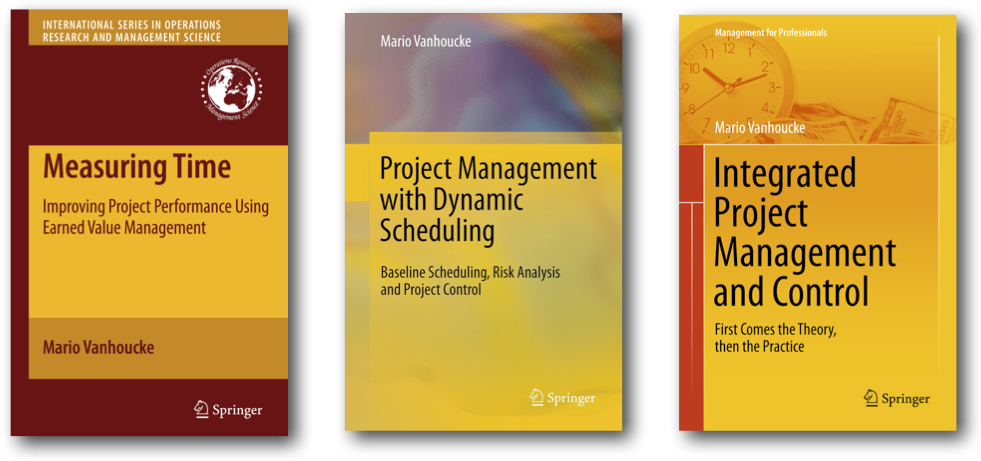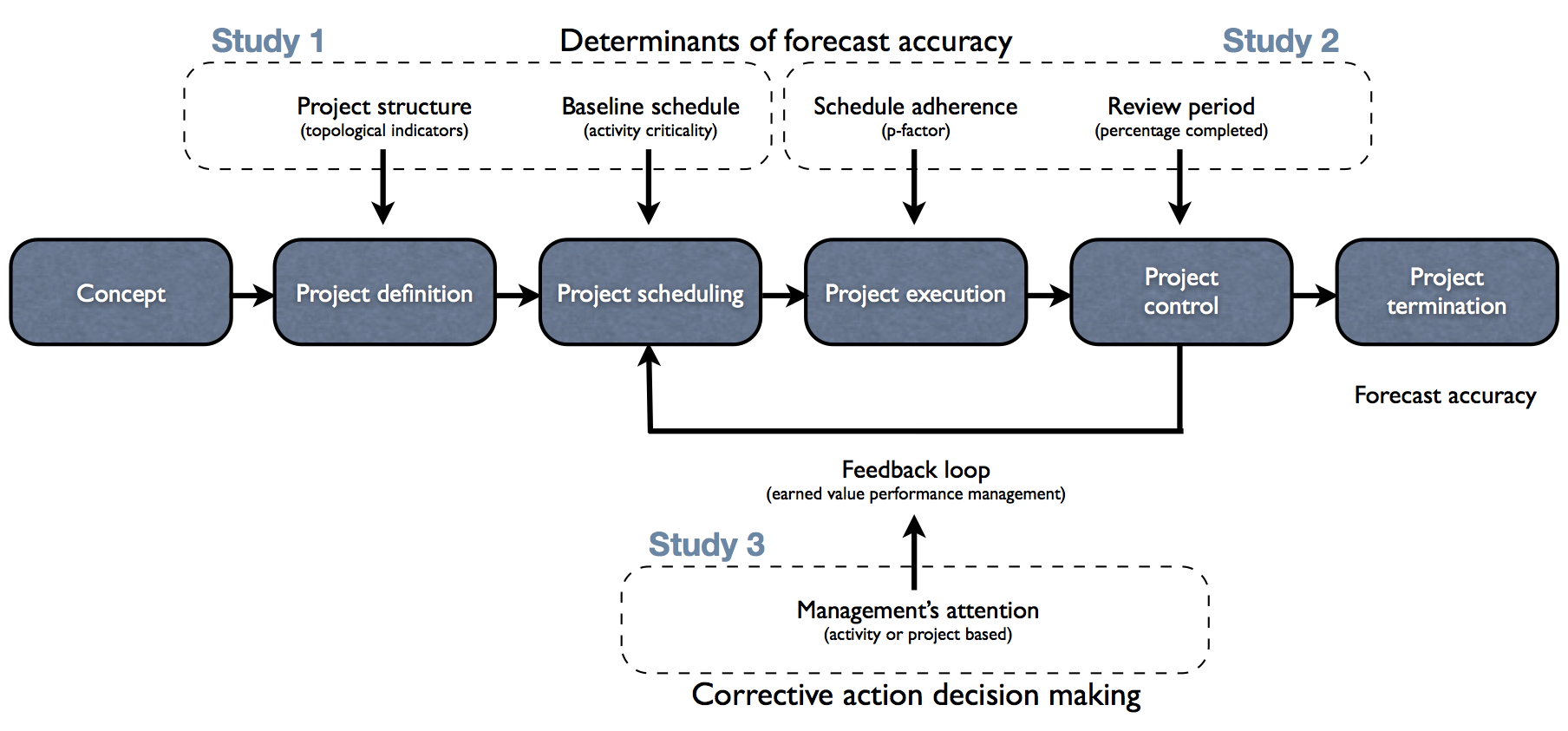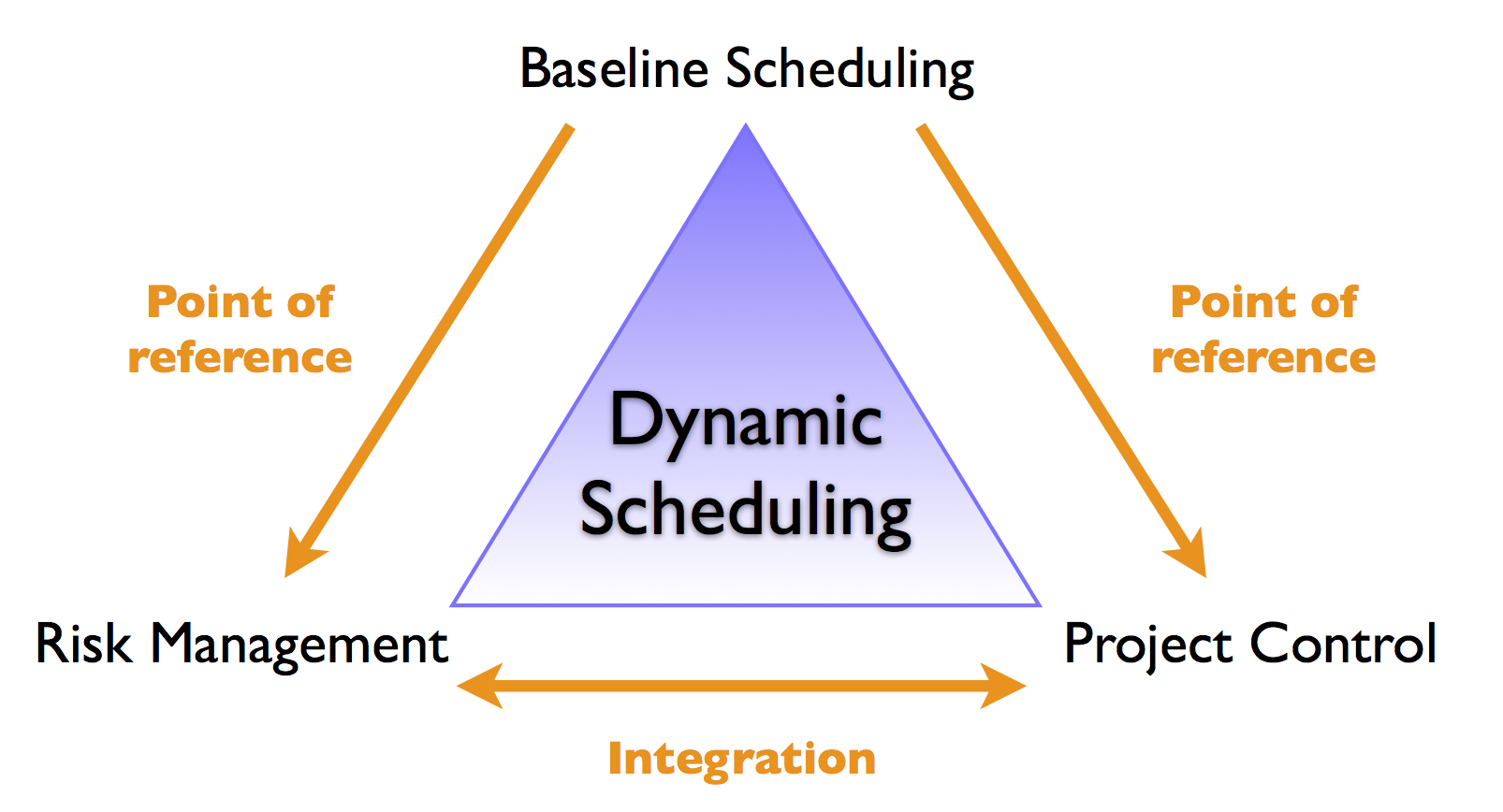Project baseline scheduling, risk analysis and project control are crucial steps in the life of a project. The project manager uses the project schedule to help planning, executing and controlling project activities and to track and monitor the progress of the project. A major component of a project schedule is a work breakdown structure (WBS). However, the basic critical path method (CPM) schedules, or its often more sophisticated extensions, are nothing more than the starting point for schedule management. Information about the sensitivity of the various parts of the schedule, quantified in schedule risk numbers or of a more qualitative nature, offers an extra opportunity to increase the accuracy of the schedules and might serve as an additional tool to improve project monitoring and tracking. Consequently, project scheduling and monitoring/control tools and techniques should give project managers access to real-time data including activity sensitivity, project completion percentages, actuals and forecasts on time and cost in order to gain a better understanding of the overall project performance and to be able to make faster and more effective corrective decisions. All this requires understandable project performance dashboards that visualize important key project metrics that quickly reveal information on time and cost deviations at the project level or the activity level. During monitoring and tracking, the project manager should use all this information and should set thresholds on the project level or on lower WBS levels to receive warning signals during project execution. These thresholds serve as triggers to take, when exceeded, corrective actions.
?Figure 1. Dynamic scheduling: the baseline schedule, risk management and project control triangle
This triangular role of a project schedule is often labeled as “dynamic scheduling” (see figure 1) to highlight the need and ability of project scheduling software to dynamically create a baseline schedule environment that provides information during project execution and that can be easily adapted using the new information during project monitoring and tracking. Consequently, the three dimensions of dynamic scheduling can be summarized as follows:
-
Baseline schedule construction: A project baseline schedule visualized in a Gantt chart acts as a point of reference in the project life cycle. It should especially be considered as nothing more than a predictive model that can be used for resource efficiency calculations, time and cost risk analysis, project tracking and performance measurement, and so on (see “Dynamic scheduling: An introduction to baseline scheduling”).
-
Schedule risk analysis: When management has a certain feeling of the relative sensitivity of the various project activities on the project objective, a better management’s focus and a more accurate response during project tracking should positively contribute to the overall performance of the project. Through the use of buffers inserted into the baseline schedule, the project is better protected against unexpected delays and corrective actions can be restricted to a minimum (see “Dynamic scheduling: An introduction to risk management”).
-
Project control: Using dynamic information during project progress to improve corrective action decisions is the key target of project monitoring and control. The performance information obtained through EVM will be dynamically used to steer the corrective action decision making process and improve the overall success of the project (see “Dynamic scheduling: An introduction to project control”).

Figure 2. An overview of the dynamic scheduling topics of PM Knowledge Center (PMKC)
An overview of PM Knowledge Center’s “Dynamic Scheduling” topics is given in figure 2. Below, a summary of the main purpose of PM Knowledge Center and references to its central theme “Dynamic Scheduling” are given, containing the following elements:
-
Stimulate interaction with PMKC visitors
-
Support PMKC
-
ProTrack’s dynamic scheduling
-
PMKC’s Bookstore
-
P2 Engine: Advancing the state-of-the-art knowledge
-
Project Management research
Stimulate interaction
The main purpose of PM Knowledge Center is to interact with our audience consisting of undergraduate and graduate students, MBAs and practitioners. All summary articles of PMKC published on the website are freely available by any visitor. Integration with email programs or iPad (e.g. Flipboard) through RSS integration can be easily set up on
www.pmknowledgecenter.com/rss.xml. The ability to test your knowledge is integrated in the various articles and requires a (free) subscription. More information can be found in the “
PMKC Folder”.
Support us
You can help to support the PMKC project by buying the books published or by making a donation. If you wish to make a donation to the PMKC project, please visit our
donation webpage. Feel free to donate as little or as much as you wish. Every donation is very much appreciated. All donations are confidential and remain anonymous unless you say otherwise. If you would like to see your name or your company acknowledged publicly as a sponsor, please
contact us.
ProTrack
ProTrack 3.0 is a complete redesigned version of the smart version of ProTrack 2.0. Its integration with PM Knowledge Center and its strong focus on the integration of baseline scheduling, risk analysis and project control makes it yet a stronger learning tool to stimulate interaction between researchers, students and practitioners in the field of project management and dynamic scheduling. Go to
www.protrack.be, buy, interact and... enjoy! More information can be found in the “
ProTrack Folder”.
Bookstore
The themes discussed in PM Knowledge Center are the result of research projects at Ghent University and Vlerick Business School and the development of a commercial software tool ProTrack at OR-AS. Currently, three books published by Springer are available (see figure 3):
-
Integrated Project Management and Control: First comes the theory, then the practice: A summary book on Earned Value Management and Schedule Risk Analysis, containing example projects and reports, as well as an overview of the P2 Engine tool. More information can be found in the “Book Folder: IPMC”
-
Project Management with Dynamic Scheduling: Baseline scheduling, risk analysis and project control: An overview book on the three main themes of dynamic scheduling, containing overview chapters, cases studies and a tutorial for the ProTrack software tool. More information can be found in the “Book Folder: Dynamic Scheduling”.
-
Measuring Time: Improving project performance using Earned Value Management: A project control research study awarded by the Belgian chapter of the Project Management Institute (PMI-Belgium) and the International Project Management Association (IPMA). More information can be found in the “Book Folder: Measuring Time”.

Figure 3. PMKC bookstore: three books published by Springer
P2 Engine: Advancing the state-of-the-art knowledge
P2 Engine is a command line utility tool based on the LUA scripting language to generate gigabytes of project data. It generates project baseline scheduling data and risk analysis metrics as well as dynamic project progress data that can be used for testing and validating novel research ideas. Join our research projects and freely download P2 Engine at
www.or-as.be/p2engine.
?P2 Engine gives the user access to the complexity of various project analysis algorithms incorporated in ProTrack 3.0. The researcher can solve difficult and critical dynamic project scheduling optimization problems using ProTrack’s intelligent algorithms. It can easily produce a enormous database of optimization results for a wide range of project management problems faster than ever before and advance the state-of-the-art knowledge available today.
Project Management research
All articles, books and the software tool ProTrack are the result of years of academic research. Most research done before and during the continuous development of ProTrack can be situated in the so-called Project Life Cycle (PLC, see figure 4). This cycle defines all phases between the start and end of the life of a project, and has been extensively described in various sources.
?

Figure 4. The project life cycle and the three integrative studies used in all research studies
The aim of the research is threefold. First, the research goal is to search for determinants that influence the accuracy of earned value based predictive methods to forecast a project’s final duration. A distinction is made between static determinants, which can be calculated before the start of the project (i.e. during the definition and scheduling phases, see study 1 of the figure 4) and dynamic determinants, which can be calculated during the project’s execution and control phases (see study 2). Obviously, the ultimate goal is not the accuracy for the sake of accuracy, but rather to use this static and dynamic information to guide and improve the corrective action decision making process (see study 3).






